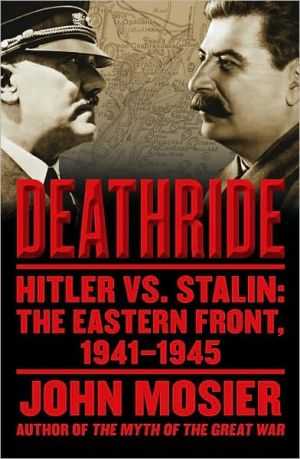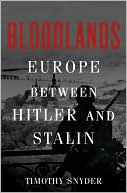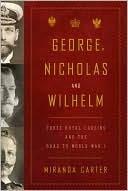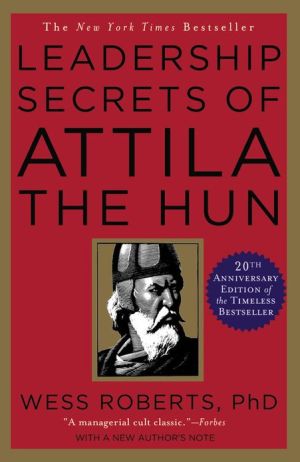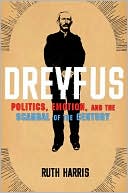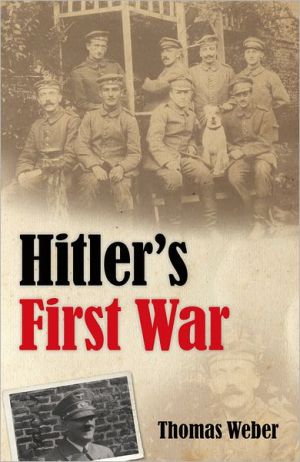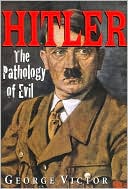Deathride: Hitler vs. Stalin - The Eastern Front, 1941-1945
The German invasion of the Soviet Union on June 22, 1941, began a war that lasted nearly four years and created by far the bloodiest theater in World War II. In the conventional narrative of this war, Hitler was defeated by Stalin because, like Napoleon, he underestimated the size and resources of his enemy. In fact, says historian John Mosier, Hitler came very close to winning and lost only because of the intervention of the western Allies. Stalin’s great triumph was not winning the war, but...
Search in google:
The German invasion of the Soviet Union on June 22, 1941, began a war that lasted nearly four years and created by far the bloodiest theater in World War II. In the ... Publishers Weekly In this exhaustive study of the eastern front of World War II, Mosier (Cross of Iron) strongly challenges traditional arguments, asserting that “the evidence suggests not only that Hitler came much closer to an outright victory than is often supposed, but that much of what we think is true about this conflict is, if not completely false, very nearly so.” While he agrees with many that the enduring legacy of Hitler and Stalin is the memory of “mountains of corpses” the two leaders left behind, Mosier asserts not only that the Soviet Empire lacked the inexhaustible manpower often attributed to it, but that they were seriously hampered by their own policies, leading to infamous issues of infrastructure (tank factories that turned out tanks but no spare parts, for instance). Mosier returns often to Soviet statistics cited since the war, determining each time that the figures “have very little credibility, are in fact simply another instance of how Stalin created facts to substantiate the pseudo-reality of his state.” With 85 pages of sources and endnotes, Mosier’s tome will satisfy seriously curious readers in search of a new trail to follow. (June)
Deathride\ Hitler vs. Stalin - The Eastern Front, 1941-1945 \ \ By John Mosier \ Simon & Schuster\ Copyright © 2010 John Mosier\ All right reserved.\ ISBN: 9781416573487 \ \ \ I\ INTRODUCTION:\ PSEUDO-REALITY AND THE SOVIET UNION\ \ In appearance everything happens in Russia as elsewhere. There is no difference except at the bottom of things.\ Marquis de Custine, Letters from Russia (1839)1\ \ The war between Joseph Stalin and Adolf Hitler was a savage conflict that raged over an enormous battlefront stretching from the Baltic to the Black Sea. In less than a year and a half, German, Hungarian, and Romanian armies penetrated into the depths of the Russian heartland, reaching historic towns on the Volga and the Don whose last experience of invasion had been centuries before. During the course of the next two and a half years the Red Army retraced that journey in the opposite direction, all the way to the Oder and the Danube, reaching cities whose last experience of Russian soldiery had been almost precisely 140 years earlier, during the Napoleonic Wars.\ The enormous geographic scale of the conflict was more than matched by the savagery of the fighting, the casualties sustained by the combatants, and the appalling level of suffering inflicted on the hapless civilians of European Russia and central Europe, whose peoples had not experienced such a series of calamities since the Thirty Years War. The scale of suffering and ruin was so vast as to be unimaginable. Hitler's wicked and ghastly genocidal campaign against European Jewry is almost submerged in this litany of horror and depravity, even though that genocide was one of his two main goals.\ Hitler's other aim was the destruction of Bolshevism. Our loathing and consternation regarding the Holocaust tends to make us see these two aims as entirely separate. But before the outbreak of the war on September 1, 1939, Hitler's great public relations coup with his fellow Germans and Austrians was to meld the two. Indeed from his public speeches in the 1930s, one could draw the not unreasonable inference that his antipathy toward the Jewish people was largely restricted to those who had espoused Bolshevism.2\ A consideration of that complex notion lies outside the aims of this book, as does the Holocaust itself. Suffice it to say that to accomplish those two tasks Hitler was willing to see the Third Reich, that mighty state that he had spent decades creating, destroyed. But today the prosperous, peaceful, and culturally rich Jewish communities of Germany, Austria, central Europe, and the Baltic can hardly be said to exist. But neither does the USSR.\ That by the first week of May 1945, Hitler was already dead, his armies destroyed, the cities of what he had intended to be a great imperial realm shattered by American and British bombers, should not lull us into forgetting the astonishing extent to which Hitler's evil empire nearly triumphed.\ Stalin, who planned his own holocaust in secret while basking in the world's admiration as the man who beat Hitler, survived his former ally by barely eight years. By that time, the allegedly victorious citizens of the USSR, no less than those of their client states, were beginning to envy the defeated Germans and Austrians. Hitler had boasted that the empire he created would last a thousand years. The one Stalin had forged collapsed before the millennium. The only enduring legacy of both men is our memory of the mountains of corpses they left behind.\ Given the extent to which Hitler persuaded or tempted the citizens of Austria and Germany, two of the world's most culturally and intellectually advanced nations, into carrying out his nefarious schemes, his infamy, and theirs, naturally preoccupies us. We sometimes forget that Hitler's chief adversary for the greater part of the Second World War was in no way less wicked. When the historical record is examined fairly, the difference between the depravity of the two men is difficult to discern. Most of the perceived differences are a function of Stalin's one unquestionable triumph: the image of himself and of the state he largely created.\ In the decades since his death, the world has slowly come to an understanding of his remarkable success in that endeavor, together with an awareness of his innumerable crimes. There are still die-hard apologists to be found for the man and his system, and not only in Russia, but by and large they are in pretty much the same global circus as Holocaust deniers.\ The sorry history of Stalin's propagandistic triumphs, and its slow unraveling, also lies outside the scope of this book. However, such an understanding is necessary in order to comprehend the reality of the war between the two evil empires. Stalin's great trick was to convince the world that the Red Army had beaten Hitler outright; at that task he succeeded brilliantly. That the state he presided over was, in the words of one economic historian, a “victorious loser,” is realized either imperfectly or not at all; one frequently has the impression that the collapse of the Soviet state and its main satellites is seen as a natural event, like a tsunami or an earthquake.3 There is a vague realization of general causes and effects, but a rather imperfect understanding of the particulars.\ One very particular cause of the collapse of the Soviet Union was the Second World War. Looking at the wreckage of Berlin in May 1945, comparing it with Moscow, it was easy to believe that Stalin was victorious. Sixty years later, the architecture tells a different story. Both dictators sought out a war that ended in their mutual destruction. Germany's was apparent in May 1945; the Soviet Union's implosion came four and a half decades later.\ That the war destroyed both empires is still poorly understood, masked by the remarkable abilities of Stalin to fool the world into believing that his fantasies were real. He not only built castles in the air, he persuaded people to live in them. Hitler came very close to winning that war, and on the Eastern Front, his soldiers came within an ace of winning outright. In the long retreat back to Berlin and Vienna, they exacted a terrible price on their adversaries. If the astonishing advance of the German army into Ukraine and the Caucasus was, as many of them realized, a deathride, the same must be said about the bloody advance of their opponent. The outcome of the war between the two dictators was a battle to the death for both.\ The aim of this book is to provide the educated general reader with a succinct account of this important conflict, one that places the war within the broader context of the rise and fall of the Soviet Union. There are excellent scholarly accounts of almost every aspect of this war. But in addition to being lengthy and technically complex narratives, they lack this broader perspective. The result was described by the classical historian Polybius over 2,000 years ago:\ \ It has always seemed to me that those who believe they can obtain a just and well-proportioned view of history as a whole by reading separate and specialized reports of events, are behaving like a man who, when he has examined the dissected parts of a body which was once alive and beautiful, imagines that he has beheld the living animal in all its grace and movement.4\ \ The scope of the war and the legends that have surrounded it, when coupled with the unfamiliarity of most readers with the history and geography of central Europe, place a burden on even the most avid reader. But Stalin's war with Hitler presents us with an additional difficulty, one perhaps not contemplated by Polybius: the extent to which one side's account of itself is an elaborate and complex set of falsehoods.\ Indeed, the rise and fall of the USSR is a complex and difficult subject itself, justly deserving of a name (Sovietology). From the very first, the Bolsheviks exerted a polarizing effect on Russians and foreigners alike, producing generations of fierce critics, fanatical apologists, and somewhat bemused analysts who, despite their expertise, seem in retrospect to have been more wrong than right.\ Looking back on their forecasts and predictions in the light of the collapse of the Soviet Union in 1989?1990, one informed analyst noted that the “most unlikely scenario had been the one closest to the truth, however unlikely and even absurd it appeared at the time.”5\ Considered in the light of what we now know about both the USSR and the war itself, the evidence suggests not only that Hitler came much closer to an outright victory than is often supposed, but that much of what we think is true about this conflict is, if not completely false, very nearly so.\ Russia has always presented foreigners with difficulties of language and customs as well as geography. Few people could dispute the exactitude of the widely read account of Astolphe-Louis-L - onor, Marquis de Custine, who visited that country in the 1830s, and certainly not the Russians themselves, as the book was banned there for over fifty years.\ A century later, Bolshevik Russia was an even more hermetically sealed and impenetrable state than the Russia of the czars. In most respects people knew less about Russia in 1939 than they did a century earlier, and the situation hardly changed after the end of the Second World War. “After forty years in the West, I am still amazed at how little general understanding there is of Soviet reality,” the famous concert pianist and conductor Vladimir Ashkenazy observed in 2005.6\ The marquis was relatively free to move about, which was hardly the case for foreigners after the revolution. He was different in another way as well: “I went to Russia to seek arguments for repressive government, I return a partisan of constitutions,” he wrote in his Preface.7 The same could not be said of most later visitors. They came not as sharp-eyed observers, but as pilgrims reaching the Promised Land. With few exceptions, they believed anything they were told: “We used to run a little contest among ourselves to see who could produce the most striking example of credulity among this fine flower of our western intelligentsia,” is how the Moscow reporter for the Manchester Guardian put it. The reporter, a youthful and idealistic Malcolm Muggeridge, was himself a pilgrim, but one of the small number whose eyes had been opened by the actual experience.8\ Few foreigners were allowed outside Moscow and Petrograd (the capital had been downgraded, renamed Leningrad), regardless of how enthusiastic their socialism, how credulous they were. Even the most cynical and skeptical of observers were forced to rely almost totally on what the new state chose to reveal about its aims, its progress, and the lives of its people. Governments naturally wish to present their best face both to their citizenry and to the world at large. The Bolsheviks had taken to this idea with enthusiasm from the very first, and as Stalin gradually assumed total control over the new state in the decade before the start of the Second World War, the techniques were carefully refined.\ True, there was a certain level of awareness among outsiders that things were not as they seemed. It was a state in which there were, for instance, no airline accidents, no missing persons, and no crime.9 When, in the decade before the collapse, curious foreigners were allowed to experience Soviet reality with somewhat more freedom, the shock was considerable. David Remnick's summation is apt: “It was Oz, the world's longest running and most colossal mistake.”10\ Metaphors and analogies are powerful descriptors, but historians require facts. In the case of the Soviet Union, the organs of the state were more than happy to oblige, providing reams of statistics backing up whatever assertion they wished to make, remaining grimly and often threateningly silent when asked for facts that might prove less convenient. The Soviet Union was Oz with numbers, reality hidden somewhere in a constantly shifting maze. Winston Churchill summarized the situation with his usual flamboyance when he observed that\ \ the Bolsheviks have discovered that truth does not matter so long as there is reiteration. They have no difficulty whatever in countering a fact by a lie which, if repeated often enough and loudly enough, becomes accepted by the people.11\ \ By the time of the Second World War, Stalin had a great deal of practice in his craft. Although he had inherited the technique from Vladimir Lenin and Lenin's inner circle, he had refined it to an exquisite degree. He thus was able to fashion a simple and compelling account of what he decided would be called the Great Patriotic War, delivering it over the radio (and in public speeches) in installments. After 1945 these addresses were collected and disseminated all over the world in a small volume with the same title.12\ His version of the war was perfectly pitched. After recoiling from the treacherous and unprovoked Hitlerite attack, the Red Army managed to prevent the invaders from reaching Moscow. The great battle before the gates of Moscow was the first in a series of staggering defeats, in which the Hitlerites were driven out of the homeland and Hitler defeated. They were driven out by the roused patriotic fury of the Russian people, whose strength was reinforced by the goals of socialism and inspired by the example of Stalin himself, who personally took control of the Red Army and was thus the architect of the victory over Hitler.\ After May 1940, Hitler had few supporters in the West, and after 1945, the world justly recoiled from his savagery. There was no limit to what he was capable of doing, and as Germany had been finally defeated, Stalin's account seemed plausible enough. As one of France's greatest modern historians observed, the goodwill that Stalin had squandered in the years before the war he managed to recoup once the Soviet Union was invaded; indeed the Soviet victory, due to the power of the Red Army, became one of the regime's most important achievements.13 In the decades after the war, as the system's failures became more and more obvious (at least to its citizens), the sufferings and victories of the Great Patriotic War became even more important: they explained both why things were not any better than they were, and why Russia was a great power. Whatever the facts of the case, they were rapidly submerged in the legends.\ There is nothing particularly unusual in that. The French, the British, and the Germans all came out of the First World War with their own legends. The brilliant, and brilliantly sarcastic, French writer Jean Dutourd's comments about that process describes the inevitable aftermath of any great war: “While our soil was being littered with statues of dying soldiers in cheap stone, Gallic cocks in brass, and weeping angels cast in concrete, the war veterans were reducing their epic to the level of street-corner gossip.”14\ The idea that governments are known to lie, particularly during a war, is hardly novel, but there is an additional complication for historians who come along later trying to divine the truth. Once the process of weaving deceptions begins, the deceptions are not limited to the public at large. As David Lloyd George, British prime minister after 1916, observed in his memoirs:\ \ The reports passed on to the ministers were, as we all realized much later, grossly misleading. Victories were much overstated. Virtual defeats were represented as victories, however limited their scope. Our casualties were understated. Enemy losses became pyramidal. That was the way the military authorities presented the situation to Ministers, that was their active propaganda in the Press. All disconcerting and discouraging facts were suppressed.15\ \ So historians trying to piece together the true state of affairs by examining documents and the accounts of eyewitnesses perforce must operate more like lawyers in criminal cases than traditional researchers.\ The Soviet case is much more difficult than the British, and not simply because it involves Russia. Stalin, a keen student of the First World War, not only systematically did all the things that Lloyd George accused officials in his own government of doing, but he murdered, imprisoned, or made complicit in his crimes those who said anything to the contrary of his ideas. When Nikita Sergeyevich Khrushchev delivered his denunciation of Stalin in February 1956, he revealed the extent to which there were real crimes:\ \ Of the 139 members and candidates of the Central Committee who were elected at the 17th Congress, 98 persons, i.e., 70 per cent, were arrested and shot (mostly in 1937?1938). . . . Of 1,966 delegates with either voting or advisory rights, 1,108 persons were arrested on charges of anti-revolutionary crimes.16\ \ In his speech Khrushchev also remarked that “When we look at many of our novels, films and historical-scientific studies, the role of Stalin in the Patriotic War appears to be entirely improbable.” Indeed, Stalin's role was entirely improbable, but it was also of a piece with the legend Stalin had created. Moreover, like the other fabrications about the Soviet state, the Stalinist account of the war has proven to be remarkably durable, despite its improbability.\ There are four reasons for the sturdiness of the Stalinist legends. The first two, while unexceptionable, account for their power. Stalin's narrative offers a clear and compelling account of this complex struggle. His account resonates with the idealism of socialism that people naturally find attractive.\ But Stalin's version of the war has not been received as a myth, a legend, or a folktale; rather it is treated as though it is history, which leads us to the other two reasons for its success. His account of the war was the latest installment in a series of successful fictions that were almost universally accepted in the West as being facts. Finally, the facts themselves, the very stuff of history, were controlled and manipulated to fit the story. Unraveling the close connection between the creation of fiction and the manipulation of fact is a complex process.\ The fictions were so artfully woven, so interconnected, that the word “lie” is hardly an adequate characterization of them: taken together they formed an alternative universe, a world in which, to use a phrase of the great Austrian novelist Robert Musil, “Pseudo-reality prevailed.”17 In order to understand the war between Stalin and Hitler, it is necessary first to understand that pseudo-reality. The existing narratives of the war are part of that alternative Bolshevik universe. The world according to Stalin is a world in which not only does the “improbable” become the sober truth, but in which virtually every fact is often in some way backward.\ Consider: in the first decade after the end of the Second World War, the slogan “Socialism Triumphant over Nature” appeared inside the USSR and its satellites. The phrase was not simply intended as a rhetorical flourish. In Hungary, for instance, it meant that the state decided that properly socialist farms could grow oranges, despite what one might think were the obvious difficulties, and this bizarre experiment was attempted.18 But in the context of the history of the USSR, there was nothing bizarre about it. On the contrary, the notion had a respectable scientific pedigree.\ In the 1930s, a Russian agronomist and dedicated member of the party, Trofim Denisovich Lysenko, had argued that the Mendelian concept of heredity was a capitalist fiction, that Mendel had it backward.19 This eccentric idea was perfectly consistent with Marxism, a self-described scientific philosophy, and indeed was derived from it. Moreover, Lysenko campaigned tirelessly for his ideas. As a result, Lysenkoism became an accepted scientific principle inside the USSR, with appalling consequences for agriculture. In 1913, Russia had been the world's largest exporter of grain; by 1987 it was the world's largest importer.20\ To say that Lysenko's pseudo-science was the sole culprit, or even the chief reason, for the problems of Soviet agriculture would be overly simplistic. For one thing, during the 1930s Stalin's agricultural policies resulted in the deaths of millions of people from starvation, most of them Ukrainian, to the extent that in Ukraine the Holodomor (to give the famine its Ukrainian name) is seen, not without good reason, as a form of genocide.\ The number of victims during the Holodomor staggers the imagination. In 1998 Soviet general Dmitri Antonovich Volkogonov estimated that over nine million people died as a result of Stalin's campaign to collectivize agriculture, a figure that is more or less accepted today as a reasonable estimate.21\ It was indeed a holocaust. But in the alternative Soviet universe, it never happened. Nor was this denial confined to the organs of the state. In the 1930s, sources regarded as respectable and responsible, from the Moscow correspondent of the New York Times to celebrities like George Bernard Shaw, assured us that there was no food shortage in the Soviet Union, and there were certainly no deaths from starvation; that tragic fate only befell the victims of Western capitalist oppression.22\ Meanwhile, as the decades passed by, Western intellectuals not infrequently assumed that “the Soviet standard of living would far surpass the West's. . . . Bread would soon be distributed free in the people's democracies. . . . The Iron Curtain would soon be reversed . . . by defectors ?escaping from penury.' ”23 That the rulers of the communist states were unable to produce enough food for their own people, that indeed there were acute shortages at every level well into the 1970s, that the situation was better than in the past only because the past had been so frightful—all of these glaring flaws were airily dismissed. The result was a complicated lie of such complexity that the only characterization is the one usually attributed to the physicist Wolfgang Pauli, “So wrong it isn't even wrong.”24\ A state that can manage its public relations so brilliantly can represent itself in any way it wishes, and in the case of the war, it did far more than what Lloyd George characterized his generals as doing, creating an account that reverses reality in stupefying ways. In 1940 the Soviet security services marched some 15,000 captive Polish officers into the woods and murdered them. In 1943, after the Germans had occupied Stalin's recently acquired Polish territory, a wolf uncovered some of the graves. The Germans then found most of the remains of the murdered officers and promptly publicized to the world the evidence of Stalinist atrocities, even calling in representatives of the Red Cross to authenticate the evidence.\ The Katyn Woods Massacre, as it came to be known, is one of those rare instances in which, as of 1991, all the facts have become known. We know the names of the vast majority of the victims, we have eyewitnesses who confirmed that the killings were carried out by the Soviets. Perhaps most important of all for many in the West, we have the results of an investigation carried out by the Russians themselves, as well as a formal recognition by the government that there really was a massacre and that it was carried out by the Soviet security services exactly as the Germans had claimed.25\ Stalin, however, did more than deny the evidence and produce a convincing alternative story. At the Nuremberg trials, the Soviet prosecutor insisted that the Germans be tried for the Katyn Massacre. When the main trial began, he also demanded that the Germans be prosecuted for killing Soviet military personnel taken as prisoners of war, going to great lengths to prove that this was not merely the “action of individual guards. . . . It was the result of systematic plans to murder.”26 German directives to this effect, particularly the one that began with the sentence “The Bolshevist soldier has therefore lost all claims to be treated as an honorable opponent in accordance with the Geneva Convention,” are prominent in that section of the indictment.\ Stalin stood the truth on its head, and the Allied leaders, who knew perfectly well who had killed the Polish officers, let him do it. The Soviet Union had never signed the relevant conventions, nor had the Red Army of the Bolsheviks ever paid the slightest attention to them: what would generally be called atrocities and war crimes were in fact a deliberate instrument of state policy.\ Bolshevik atrocities in no way justify the behavior of the Wehrmacht, whose personnel were involved in a series of crimes of a similar nature; the only difference being that the Soviets murdered and mistreated prisoners of war on a larger scale, as though a serial killer who murders seventy innocent people is in some way worse than one who kills fifty.27\ Katyn Woods was more than a horrible atrocity in a war rife with atrocities. Just as Lysenkoism illustrates the extent to which a pseudo-reality prevailed, Katyn Woods helps us to understand both why it prevailed and why we should care.\ The murder of a few tens of thousands may seem insignificant when compared to the even more horrible deaths of what turned out to be countless millions, but Stalin essentially destroyed the leadership that Poland needed as a nation if it was to survive the war with any semblance of independence. “The Polish government never recovered from the wound he inflicted, and the memory of it has been etched deeply in the collective memory of the Polish people,” is the judgment of the author of the definitive study of the massacre, and even for people who suffered as the Poles did, Katyn was a ghastly crime: “Looking back I see nothing but ruins, only mountains of corpses,” is how Dmitri Shostakovich, himself of Polish extraction, puts it.28\ This massacre was not an isolated instance. At the same time as the Katyn Woods Massacre, Stalin directed his own ethnic cleansing: some 275,000 Poles, members of classes the Bolsheviks judged undesirable, were deported into the distant interior of the USSR in the first six months of 1940. The forced movements were stopped only by the German invasion in June 1941, at which time a little over 300,000 people had been banished to the periphery of the country: “Polish administration, the Polish Army, and Polish intellectuals ceased to exist”; or, to quote Stalin himself, “We must smash them into oblivion.”29\ Although the dimensions of the Polish catastrophe have always been known, the vast majority of analysts and historians have ignored it. In their accounts they “choose to pass over it in silence. Silence is a widespread practice,” to quote the authors of one of the few books to deal with this morbidly fascinating subject.30 In cases where it was impossible to remain silent, one sees phrases such as “several thousand missing Polish army officers, supposedly interned by the Soviets,” or that “evidence . . . has been used convincingly to prove the culpability of both sides . . . motives for which are equally persuasive.”31\ Stalin ensured that his version of history would prove a sturdy construct because he made the evidence support him. He eliminated most of the witnesses to the contrary, and in various ways he incriminated the survivors, pulling them into his own peculiar universe so that they hardly knew what the truth was.\ In so doing, Stalin raised grave difficulties for future historians, who understandably prefer documentary evidence to hearsay, archives to stray anecdotes, and statistics to eyewitnesses whose testimonies are largely unverifiable. Unfortunately, one of the few givens in the history of the Soviet state is the unreliability of those traditionally important sources.\ Given a situation in which every industrial accident was treated as an act of deliberate sabotage by foreign agents and their stooges, the man who wrote a report pinpointing design defects or shoddy quality control could easily find himself in dire trouble. We all know that subordinates often tell their superiors what they think they want to hear. In the case of the USSR, telling the boss what he didn't want to hear had fatal consequences. When Pavel Vasilievich Rychakov, chief of the air force in 1941, defended the horrific safety record of his pilots by pointing, correctly, to the abysmal quality control and design of Soviet aircraft, he was arrested, accused of being part of a conspiracy that included others, and shot.32\ As is often the case with Stalin, the story rapidly escalated into a complex tale of improbabilities. Among those that Rychakov implicated under torture was the brother of Lazar Moiseyevich Kaganovich, who was responsible for the aircraft factories (Lazar Moiseyevich himself was a senior member of the Central Committee). Stalin made the improbable claim that Mikhail Moiseyevich, a Russian Jew, had been “designated head of Hitler's puppet government,” adding that “I have the testimonies.”33\ So documentary evidence of any kind thus has to be regarded with suspicion. Nor do the recollections of witnesses carry the same weight as they would elsewhere. Men and women who had been adults in 1941 and were still alive in 1956 had become habituated to internal censorship. They not only refused to say out loud what they thought; oftentimes they didn't even know what they should think. As the Polish philosopher Leszek Kolakowski observed, “This is the great triumph of socialism in the sphere of knowledge: to the extent that it succeeds in demolishing the notion of truth, it cannot be accused of lying”; or as a wry Soviet era proverb has it, “He lies like an eyewitness.”34\ Given the depth and breadth of these deceptions, and the extent to which the refracted reality that resulted from them affected the survivors, the notion that any Soviet claim about an event as important as the Great Patriotic War, or any particular event in that war, can be taken as true is highly dubious.\ These examples of Soviet duplicity and deceit are not presented as an exercise in Stalin bashing. Rather they are intended to help the reader understand the broader context of a highly distorted Soviet reality that is the warrant for the approach taken in this history of the war on the Eastern front. In almost every other field of study propaganda is generally recognized for what it is, and discounted: no reputable historian gives the slightest credence to the North Korean and Chinese communist claims as to Allied air losses, war crimes, and involvement in bacteriological warfare during the Korean War.35 But as we shall see in this account of the war between Stalin and Hitler, almost every Soviet claim is either accepted as the sober truth or nearly so.36 That being the case, a brief account of the extent to which we now know how skillfully and systematically every significant piece of data was manipulated by the Soviets is a useful corrective as well as an indispensable prelude to this account of the conflict.\ That account begins with an appreciation of one of the basic parameters used to evaluate military success in warfare, the loss figures for the combatants. As General Volkogonov observed, in warfare there is a “fundamental principle of the military art, namely, that the objective should be gained at minimal cost in human life.”37 By that rather basic standard, Stalin was, as the general points out, “ignorant.”\ Loss figures for the Wehrmacht for both world wars have always been available, based on the reports generated by the medical services every ten days. Those records show that 1,419,728 German soldiers were killed on the Eastern Front and 997,056 were missing as of December 31, 1944, for a total of 2,416,784 officers and men.38\ Although many of those listed as missing were taken prisoner and should have survived the war, the men who survived Soviet prison camps were in a distinct minority, perhaps as few as 10 percent.39 So the higher figure is a more accurate reflection of German losses against the Soviet Union. The total number of German soldiers killed in action in all other campaigns comes to roughly 735,000 men, roughly one third of the total war dead: two out of three German soldiers killed in action died on the Eastern Front.\ On the Soviet side, even such a basic figure as the number of war dead proves to be slippery. In the decades after 1945, Soviet calculations of losses underwent substantial revision, the result being to raise the numbers considerably. Initially, the number given out was 7.5 million dead, and in the immediate postwar era that figure was provisionally accepted, when mentioned at all. Soviet writers were reluctant to state any hard numbers as to their losses.40 That number, however improbable, was duly confirmed. After the fall of the USSR, and the consequent opening of some of the archives, the official figures that emerged showed slightly under seven million dead.41\ As we shall see in the pages that follow, Soviet figures have very little credibility, are in fact simply another instance of how Stalin created facts to substantiate the pseudo-reality of his state. But even putting that reservation aside and accepting the official Soviet data, the Germans clearly had an enormous advantage in the casualty exchange rate, the advantage being about 3.5:1, a calculation that suggests the reasoning behind General Volkogonov's characterization of Stalin.\ The skeptical reader might well retort that given the relative sizes of the two combatants, Stalin could afford such losses; a rather precarious moral point but one that is often implicit in what is written about the war. Stalin himself created this particular myth when he said in 1941, “Our reserves in manpower are inexhaustible.”42 The population data suggests otherwise. In 1939 the population of the USSR was between 167 and 170 million people. But the population of Hitler's Reich was at least 86 million.43 A simple calculation therefore shows that the Soviet manpower base could not sustain the casualty exchange rate deduced from even the most favorable Soviet figures. Eventually, had the war continued, Stalin would have discovered that his manpower was not inexhaustible.\ The key question, however, is how to interpret the ratio as an indicator of combat effectiveness. The first obvious comparison is with how the Allies fared in Europe when they fought the Germans. By a conventional and unexceptionable American army reckoning, the Allies had slightly under 200,000 soldiers killed, and in turn killed over 250,000 Germans, for a ratio of 5:4.44 In other words, the exchange ratio was reversed, although not much, suggesting that the combatants were evenly matched.\ So the Germans did much better against the Red Army than they did against the Allies. The narrative of the war in the following chapters explains why, and relates the course of the war accordingly.\ Of course Stalin provided a convenient explanation for the imbalance: the German successes of the first days of the war, owing to Hitler's treacherous surprise attack, disguise the resilience and success of his army.\ The problem with Stalin's tale is that as the facts about Soviet losses gradually began to emerge, the relatively low losses and the surprise attack, two central features of the legend, become more and more difficult to sustain. During Stalin's lifetime, not only were statistics invented and manipulated to agree with his commands, but when the data failed to meet his expectations, the men who created it were murdered. Stalin's successors knew very well that the official data was highly dubious.\ In the 1960s, Mikhail Andreyevich Suslov, one of the senior figures of the regime after Stalin's death, estimated the death toll at twenty million, and the first careful estimate of Soviet war dead, done by an - migr - historian, calculated the death toll at about 27 million. More recent studies done after the collapse of the USSR raise the total, so that a highly respectable reference book gives an estimate of between 28 and 30 million, with the authors stipulating that the death toll could be as high as 35 million, a figure that includes civilian deaths as well, another complex issue that will be discussed in the final chapters.45\ Although at some point the raw numbers become meaningless, the most recent data reveals an important trend. In Stalin's version of the war the heaviest losses occurred initially, owing to the treacherous surprise attack, and the official loss figures dutifully reflected steadily declining losses and a steadily growing Red Army. More recent data paints a contrary picture. The number of dead Soviet troops was actually higher in each successive year of the war. In the seven months of 1941, 4.3 million men were killed, a staggering death toll given that the usual estimate of the Red Army's combat strength in June 1941 was only 5.5 million men.\ As bad as 1941 was, the next three years were hardly better. In 1942, the death toll was seven million; in 1943, the year of the great victories of Stalingrad and Kursk, it was nearly 7.5 million men. In 1944, it was, for the first time, significantly down, only 6.5 million deaths, but in the final months of the war, the Red Army lost nearly three million men. The Germans continued to win the casualty exchange right up until the end of the war. The claim routinely made by sympathetic scholars that as the war continued, and particularly toward the end, the Red Army “decimated” the Wehrmacht, is simply wishful thinking.46\ Just as the complex web of fabrications that characterized the USSR provides the rationale for skepticism about the Stalinist legend of the Great Patriotic War, the dramatic imbalance of the casualty exchange implies that Germany maintained a constant tactical superiority on the battlefield. That imbalance suggests that Lloyd George's pithy description of the situation he confronted in the First World War is an accurate representation of the war on the Eastern Front: “Victories were much overstated. Virtual defeats were represented as victories, however limited their scope. Our casualties were understated. Enemy losses became pyramidal.”\ The view of the war from the top of the mountains of dead Russian corpses reveals a considerably different landscape from the traditional one celebrated by historians. This conflict really was a war that Hitler came very close to winning. That idea requires an adjustment of the mind which is quite difficult. After half a century in which the achievements of the Red Army have become firmly embedded in our consciousness, the notion that its triumphs were mostly smoke and mirrors is difficult to accept.\ That Stalin left the world with a mythology of the state he built that seems impervious to reason is his one unquestionable triumph. For most people, its very imperviousness suggests that it must have some basis in reality. Here, perfectly summed up, is the basis, the final words from Aleksandr Solzhenitsyn's The First Circle, in which the hapless prisoners are being transferred to another circle of Stalinist hell:\ \ Tossing about the cargo of crowded bodies, the gay orange and blue van moved through the city streets, passed a railroad station, and stopped at an intersection. A shiny maroon automobile was waiting for the same red light to change. In it rode the correspondent of the progressive French paper Lib - ration, who was on his way to a hockey match at the Dynamo stadium. The correspondent noted the legend on the side of the van:\ MYASO VIANDES FLEISCH MEAT\ He remembered that he'd already seen more than one such today, in various places in Moscow. And he took out his notebook and wrote in red ink:\ “On the streets of Moscow one often sees vans filled with foodstuffs, very neat and hygienically impeccable. One can only conclude that the provisioning of the capital is excellent.”47\ \ © 2010 JOHN MOSIER\ \ Continues...\ \ \ \ Excerpted from Deathride by John Mosier Copyright © 2010 by John Mosier. Excerpted by permission.\ All rights reserved. No part of this excerpt may be reproduced or reprinted without permission in writing from the publisher.\ Excerpts are provided by Dial-A-Book Inc. solely for the personal use of visitors to this web site. \ \
\ Publishers WeeklyIn this exhaustive study of the eastern front of World War II, Mosier (Cross of Iron) strongly challenges traditional arguments, asserting that “the evidence suggests not only that Hitler came much closer to an outright victory than is often supposed, but that much of what we think is true about this conflict is, if not completely false, very nearly so.” While he agrees with many that the enduring legacy of Hitler and Stalin is the memory of “mountains of corpses” the two leaders left behind, Mosier asserts not only that the Soviet Empire lacked the inexhaustible manpower often attributed to it, but that they were seriously hampered by their own policies, leading to infamous issues of infrastructure (tank factories that turned out tanks but no spare parts, for instance). Mosier returns often to Soviet statistics cited since the war, determining each time that the figures “have very little credibility, are in fact simply another instance of how Stalin created facts to substantiate the pseudo-reality of his state.” With 85 pages of sources and endnotes, Mosier’s tome will satisfy seriously curious readers in search of a new trail to follow. (June)\ \
